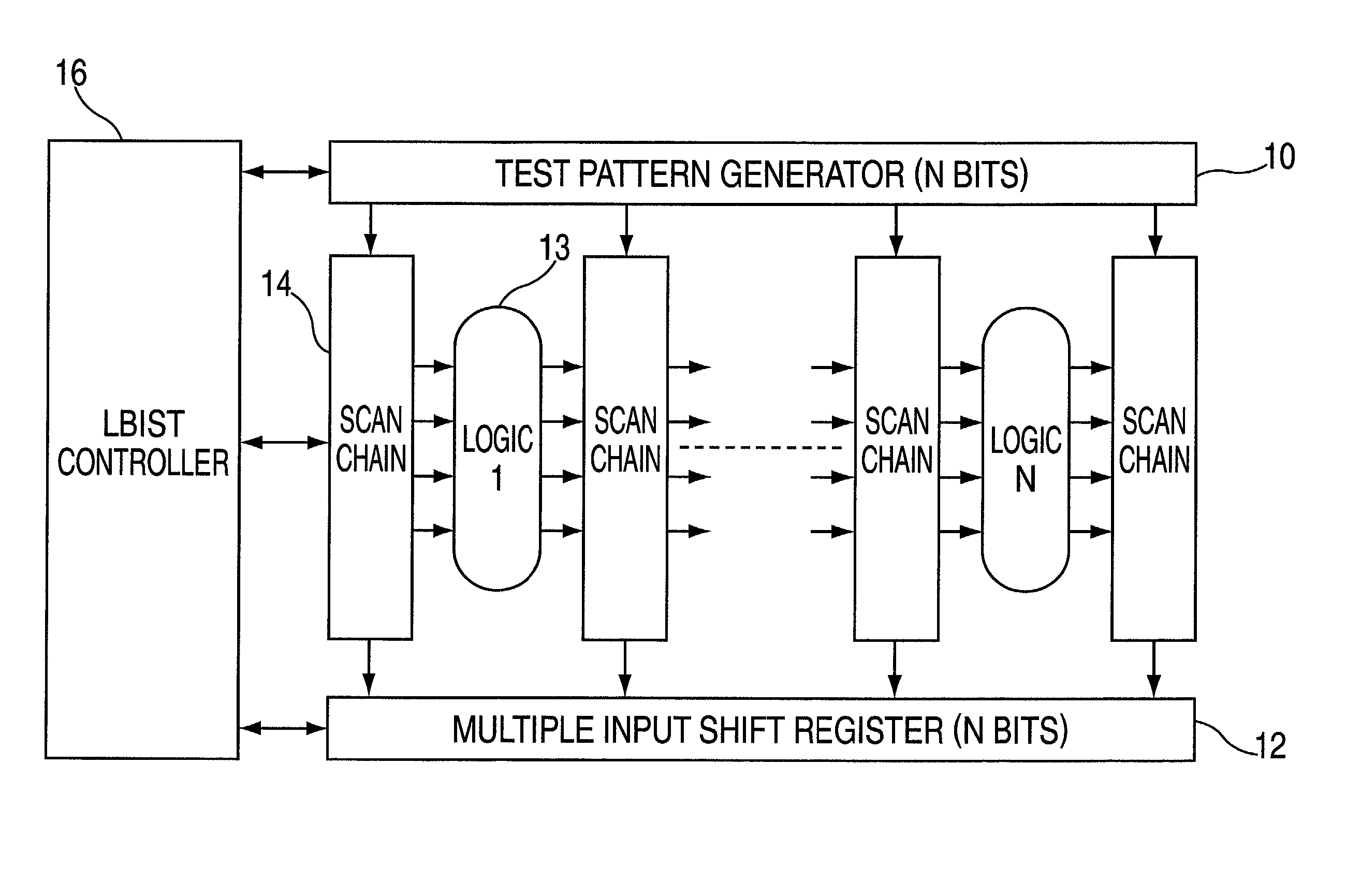Method and system for determining repeatable yield detractors of integrated circuits
a technology of repeatable yield and integrated circuit, which is applied in the field of logic system testing, can solve the problems of large determination effort, more difficult diagnosis, and low yield loss, and achieve the effects of reducing the complexity of the process
- Summary
- Abstract
- Description
- Claims
- Application Information
AI Technical Summary
Problems solved by technology
Method used
Image
Examples
Embodiment Construction
[0021] FIG. 1 shows a high-level overview of the chip LBIST implementation for LBIST testing chip logic with the use of a test pattern generator 10 which is used to generate the test patterns passing through a scan chain 14 to a multiple input signature register (MISR) 12 to compress the test results. An LBIST controller 16 is used to apply the clocks and controls to the test pattern generator, MISR and system logic to perform the test. The test pattern generator 10 of FIG. 1 generates test data which passes through logic via multiple parallel scan chains 14 which are connected between the test pattern generator and MISR 12. The test pattern generator 10 having N bits generates the test data which is scanned into the scan chains 14 as the test pattern for the scan operation portion of the LBIST test of the chip. Clock signals are applied to the logic 13 and the result of the test pattern and logic 13 is scanned out of the scan chains 14 and compressed and stored into the MISR 12 to ...
PUM
 Login to View More
Login to View More Abstract
Description
Claims
Application Information
 Login to View More
Login to View More - R&D
- Intellectual Property
- Life Sciences
- Materials
- Tech Scout
- Unparalleled Data Quality
- Higher Quality Content
- 60% Fewer Hallucinations
Browse by: Latest US Patents, China's latest patents, Technical Efficacy Thesaurus, Application Domain, Technology Topic, Popular Technical Reports.
© 2025 PatSnap. All rights reserved.Legal|Privacy policy|Modern Slavery Act Transparency Statement|Sitemap|About US| Contact US: help@patsnap.com



